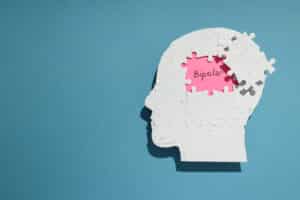More than 40 million Americans have an anxiety disorder, making it the most common mental illness in the United States.
There is a range of risk factors for anxiety and it’s associated with a higher risk of other psychiatric conditions.
Unlike some mental illnesses, anxiety is considered highly treatable. The methods to do so include therapy and medication.
However, if you’re looking for an alternative therapy method, you have a few options. Tapping for anxiety is one that works well for many people.
If you’re looking for anxiety treatment but want to try a holistic approach, tapping may be for you. It should never replace current treatment methods unless approved by your therapist.
Keep reading to find out everything you need to know.
What is Tapping for Anxiety?
Tapping, which is also called EFT, or emotional freedom technique, aims to balance your energy. This can help relieve symptoms of anxiety.
EFT tapping was created in 1995 by Gary Craig, a well-known psychotherapist. It combines the use of cognitive-behavioral and exposure therapy with physical touch.
During the treatment, certain locations on the body are tapped. The method is similar to acupressure used in Chinese medicine.
While tapping, patients may repeat a phrase or mantra. The goal is to “distract” them from their anxious thoughts and create new behaviors.
Tapping can be done in a clinical setting but can also be performed at home. That makes it a viable method of treatment for many people.
How Does Tapping Work?
Much like acupuncture, tapping focuses on certain points on the body, called meridian points. When these areas are stimulated, it’s thought to balance the energy in your body.
Many proponents of holistic therapy believe that balancing one’s energy can relieve a variety of symptoms. That includes those that appear with anxiety.
Instead of the needles used for acupuncture, tapping involves using your fingertips to apply pressure to the meridian points.
While tapping, you focus on the negative emotion, in this case, anxiety. As you tap the meridian points, you learn to accept the negative emotion and use a phrase to counteract it.
Meridian Points
Nine meridian points are used in tapping. They include the following:
- Karate chop (side of the hand)
- Eyebrow
- Side of the eye
- Under the eye
- Under the nose
- Chin
- Collarbone
- Underarm
- Top of the head
A tapping session includes stimulating each of these meridian points as you repeat the phrase you select.
Tapping Sequence
There are a few steps involved in a tapping session. They are often learned in a clinical setting and can be duplicated at home.
The first step is to determine what symptom or condition you want to focus on. In this case, it’s anxiety.
Next, you rate your distress level. This is done using the Subjective Unit of Distress Scale, or SUDS. This rating will be from 0 to 10.
Then, you create your setup statement. This statement should include the problem and acceptance of it. You will say it before you begin tapping. A shorter version can be repeated as you tap.
The actual tapping process comes next. Start by tapping the karate chop point three times while saying your set up statement three times.
Then, tap each remaining meridian point five to seven times, while saying your shortened phrase.
At this point, you can evaluate where you are on the SUDS scale. The entire process can be repeated until you reach a 0 or 1 on the scale.
Some tapping sessions may be short, while others may be longer. The goal is to reduce your distress and find peace with your anxiety.
Why Does Tapping Work?
The research is limited, but one large study found that tapping helped 90 percent of participants reduce their anxiety symptoms. That’s significantly more than the 63 percent who reported relief with CBT.
It’s thought that tapping changes how the body responds to stress, likely by involving the amygdala. This is the part of the brain that controls the flight or fight response.
While more studies are needed, preliminary findings indicate that tapping alters the brain frequencies involved with stress and relaxation.
It may also be beneficial because it helps ground someone having anxiety. It “distracts” them for a short time frame and is a good coping mechanism for use outside formal therapy.
Physically, EFT tapping has been linked to improved heart rate and blood pressure. It’s also been shown to reduce cortisol levels, which is a stress hormone that can worsen anxiety.
Often, tapping is used in combination with other forms of treatment for anxiety. That may include therapy and medications.
Though you may find that it works well for you on your own, it’s important to follow your therapist’s recommendation regarding treatment for your anxiety.
Learning How to Tap
Learning the correct method for tapping is important. It ensures that you get the most out of it with each session.
There are plenty of videos online that teach the method. However, you are likely better off letting a trained therapist show you how it works.
If you decide to try it on your own, be sure you choose a reputable source to teach you the steps. You won’t get the full range of benefits if you aren’t doing it right.
You may find that guided sessions are more effective for you. Either way, a consistent commitment to tapping will have the most profound effect on your anxiety when compared to intermittent sessions.
What’s Next?
Tapping for anxiety has been shown to have positive effects on the condition. When you want a holistic option for treating your anxiety, it may be a good starting point.
By learning to tune into your body, you can control your symptoms and lead a normal life. Anxiety is highly treatable, so it makes sense to give tapping a try. Please make an appointment with one of our experienced therapists today to discuss how tapping might fit into your treatment plan.







